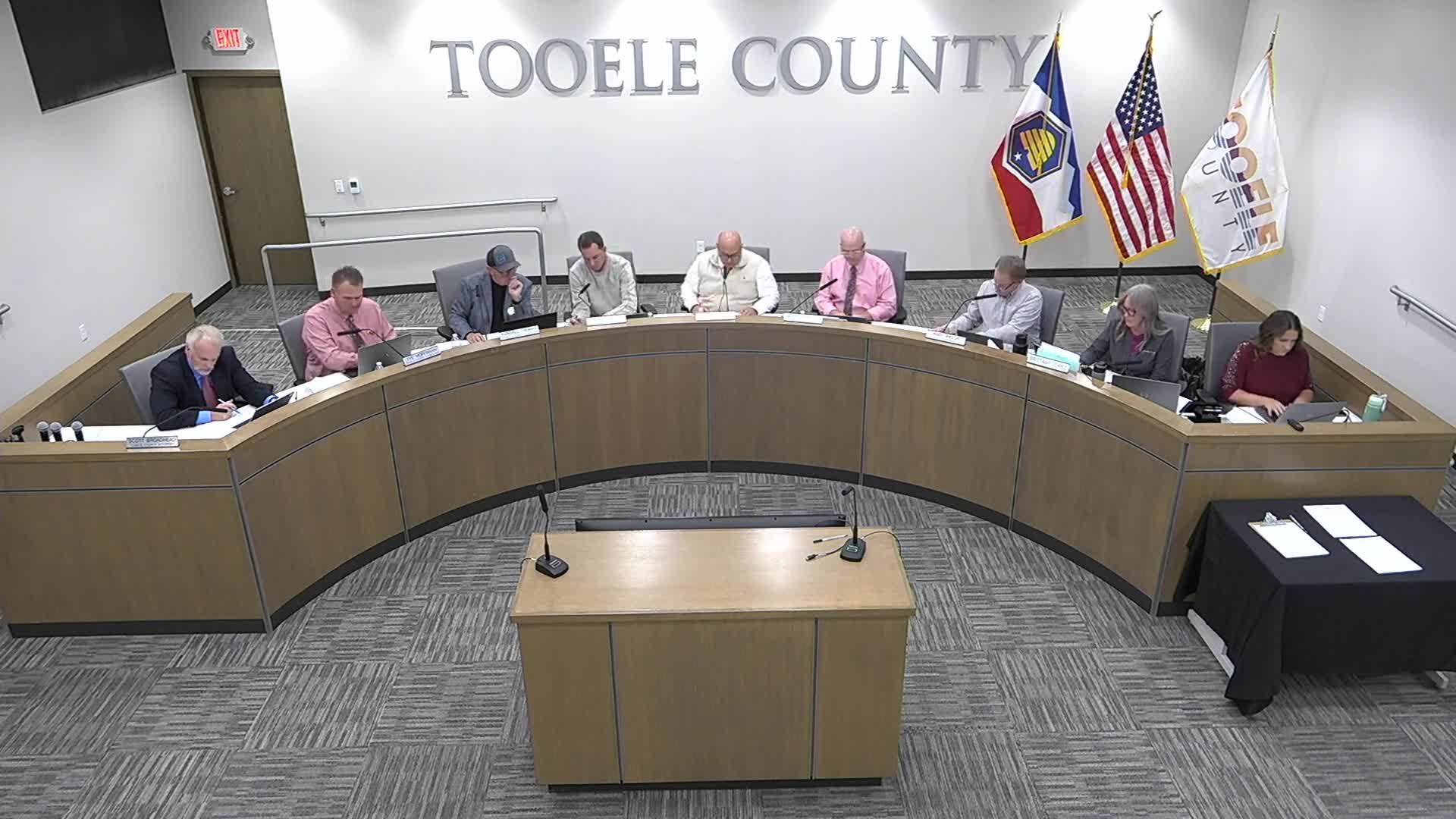Tooele County unveils online tie‑sheet map to help surveyors, public find section monuments
November 06, 2025 | Tooele County Council, Tooele County Commission and Boards, Tooele County, Utah
This article was created by AI summarizing key points discussed. AI makes mistakes, so for full details and context, please refer to the video of the full meeting. Please report any errors so we can fix them. Report an error »

Tooele County unveiled a public online tie‑sheet map on Nov. 5 that lets users locate section monuments, view associated tie‑sheet PDFs and search by address, township, range and section. County presenters said the tool will help surveyors and property owners place parcels more accurately and preserve the county’s historical monument record.
The map was described by Marissa Snyder of the county’s GIS and community development group as a representational display with a clear disclaimer: "this isn't survey grade, necessarily survey grade. It's representational." Snyder demonstrated search tools, an address lookup limited to Utah, PLS section/township/range search and a click‑to‑open function for tie‑sheet PDFs stored on an internal server.
Hayden Langston, the county’s licensed surveyor on staff, said the monument records in the system are survey‑grade. "I went out with my survey grade equipment, and this is subcentimeter accuracy," Langston said, adding that a surveyor using the data would be "within a dime on top of the monument." Langston explained the difference between the map’s representational parcel lines and the monument coordinate records, and he described how the maps support retracing property lines and protecting property rights.
Presenters told the council the map also helps address a historic problem: a dependent resurvey completed in the 1980s used a mathematical/prorated method that in places diverged from the original surveys, creating mismatches between newer monuments and older parcel descriptions. Langston said the county is locating original stones in targeted areas (Settlement Canyon was cited as an example) and producing sheets surveyors can use, but county‑wide retracing would be expensive and is done on a case‑by‑case basis.
County staff said the map is an ongoing project: a staff member renames PDFs and enters metadata so a script can associate files with map points, and staff will push updates monthly as new monuments are added. Emily Jones, identified in the presentation as a director of operations, said the project establishes a framework for future mapping efforts and thanked IT staff and partner counties for assistance.
The council and presenters also discussed internal staffing and training needs as mapping demand grows; presenters said they are training recorders to do mapping work and have relied on interns and capstone projects to help build the dataset. The county encouraged surveyors or members of the public with questions about specific monuments to contact the recorder/surveyor’s office.
The county did not assert the map replaces a licensed survey; presenters repeatedly distinguished the public, representational map from the survey‑grade monument records.
The map was described by Marissa Snyder of the county’s GIS and community development group as a representational display with a clear disclaimer: "this isn't survey grade, necessarily survey grade. It's representational." Snyder demonstrated search tools, an address lookup limited to Utah, PLS section/township/range search and a click‑to‑open function for tie‑sheet PDFs stored on an internal server.
Hayden Langston, the county’s licensed surveyor on staff, said the monument records in the system are survey‑grade. "I went out with my survey grade equipment, and this is subcentimeter accuracy," Langston said, adding that a surveyor using the data would be "within a dime on top of the monument." Langston explained the difference between the map’s representational parcel lines and the monument coordinate records, and he described how the maps support retracing property lines and protecting property rights.
Presenters told the council the map also helps address a historic problem: a dependent resurvey completed in the 1980s used a mathematical/prorated method that in places diverged from the original surveys, creating mismatches between newer monuments and older parcel descriptions. Langston said the county is locating original stones in targeted areas (Settlement Canyon was cited as an example) and producing sheets surveyors can use, but county‑wide retracing would be expensive and is done on a case‑by‑case basis.
County staff said the map is an ongoing project: a staff member renames PDFs and enters metadata so a script can associate files with map points, and staff will push updates monthly as new monuments are added. Emily Jones, identified in the presentation as a director of operations, said the project establishes a framework for future mapping efforts and thanked IT staff and partner counties for assistance.
The council and presenters also discussed internal staffing and training needs as mapping demand grows; presenters said they are training recorders to do mapping work and have relied on interns and capstone projects to help build the dataset. The county encouraged surveyors or members of the public with questions about specific monuments to contact the recorder/surveyor’s office.
The county did not assert the map replaces a licensed survey; presenters repeatedly distinguished the public, representational map from the survey‑grade monument records.
View full meeting
This article is based on a recent meeting—watch the full video and explore the complete transcript for deeper insights into the discussion.
View full meeting

